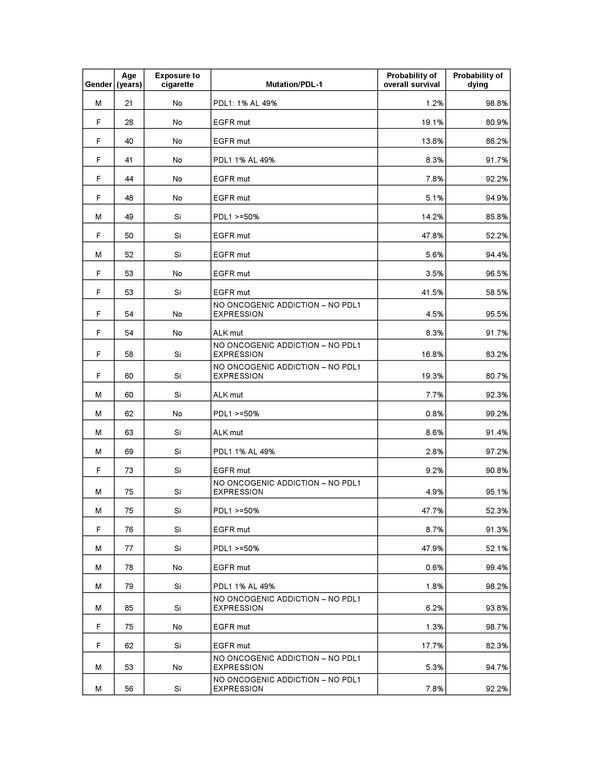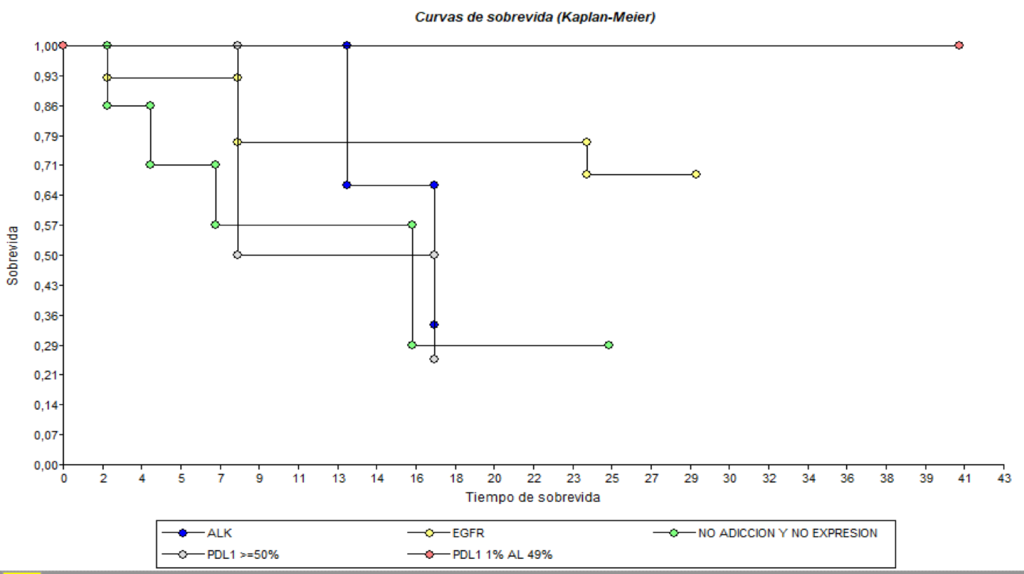Virtual Library
Start Your Search
Carlos Mauricio Camelo
Author of
-
+
P2.16 - Treatment in the Real World - Support, Survivorship, Systems Research (ID 187)
- Event: WCLC 2019
- Type: Poster Viewing in the Exhibit Hall
- Track: Treatment in the Real World - Support, Survivorship, Systems Research
- Presentations: 1
- Now Available
- Moderators:
- Coordinates: 9/09/2019, 10:15 - 18:15, Exhibit Hall
-
+
P2.16-22 - Predictive Analytic of Survival Using a Neural Network in a Real World Cohort of Advanced Non Small Cell Lung Cancer Patients (Now Available) (ID 2291)
10:15 - 18:15 | Author(s): Carlos Mauricio Camelo
- Abstract
Background
When talking about a probabilistic neural network a new concept on survival is introduced. Using advanced statistics, different characteristics amongst patients such as oncogenic driver mutation, smoking status or age can be correlated to calculate the probability of survival in each individual and even for each attending institution.
Method
We built a neural network model that allowed us to estimate the probability of mortality according to the variables: Oncogenic addiction (EGFR mutation and ALK rearrangements), expression of PDL-1, age, gender and exposure to cigarette. These variables were obtained from a cohort of patients with advanced non-small cell lung carcinoma who received treatment in our institution during the last 3 years.
Result
Thirty-one patients were included in the model. The accuracy of the neural network was 78.57% for the patients that died and 82.35% for the patients still alive. It was possible to calculate the probability of overall survival and the probability of dying in relation to age, exposure to cigarette, gender, oncogenic addiction and PDL-1 expression for each person and for the whole cohort. Individual results and global results (Kaplan Meier) are shown in table and graphic.
Conclusion

The minimum data sample required to produce the model was used (n=31), thus it would not be correct to talk about global conclusions. However, this is a representative model of a proof of concept related to predictive analytics related to probability of survival in a real world setting using a neural network that worked on an individual basis according to clinical and biological characteristics. Results for the entire cohort are also available. Using a greater amount of data will increase the accuracy of the neural network to predict survival and other outcomes in an individual and even institutional basis that will improve data analytics in real oncologic settings.


